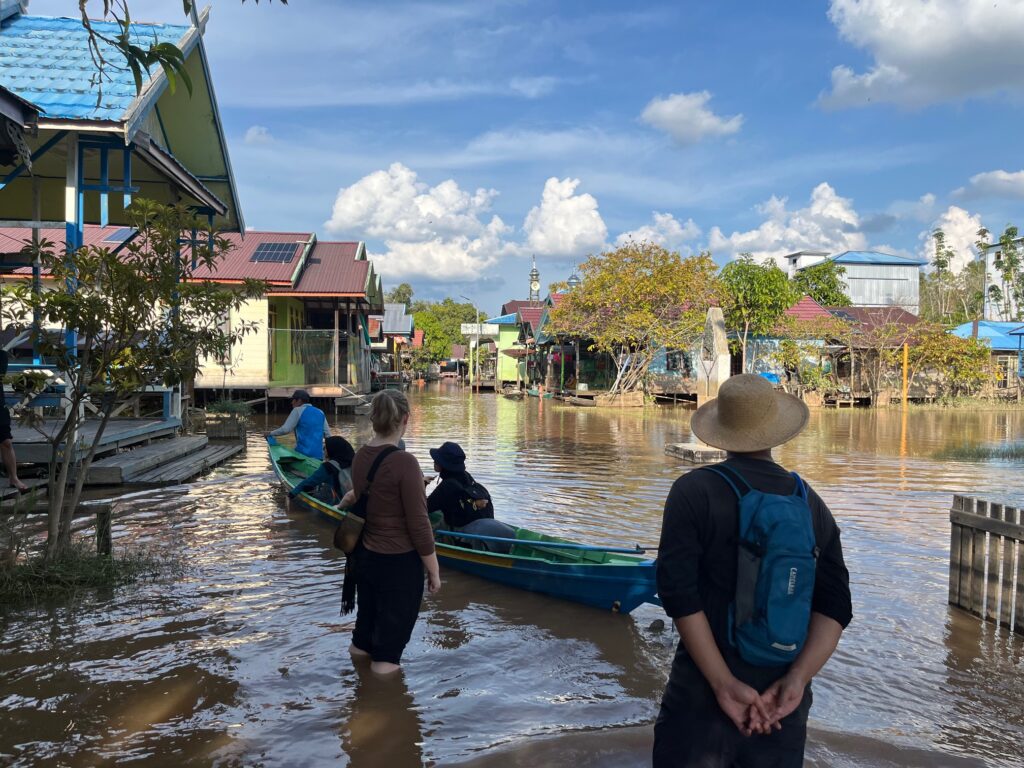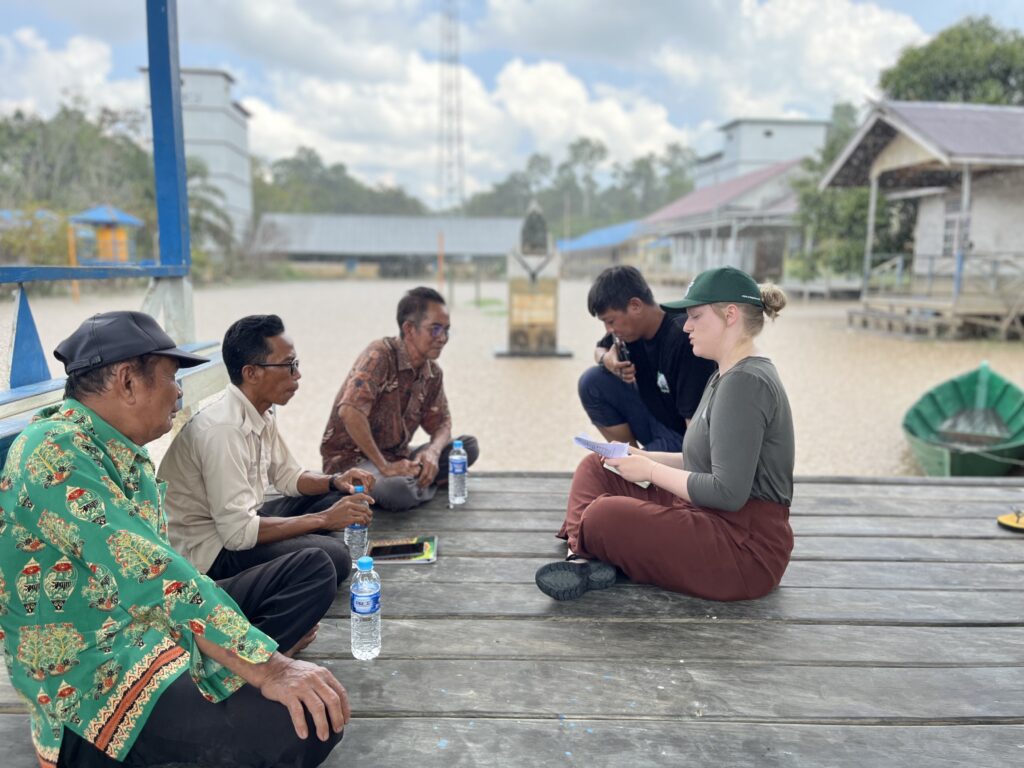For the third time this year, the village of Muroi in Central Kalimantan, Indonesian Borneo, stands deep in floodwaters – a stark reminder of how climate change affects daily life in Indonesia’s rural communities. Søren Brofeldt and Stefanie Klint, visiting program managers from Save the Orangutan, report on the unwavering community resilience that persists as water levels rise.
The aim of the project is to strengthen the capacity of the poorest and most vulnerable indigenous peoples to absorb, adapt to and prepare for climate change and climate-related disasters in Central Kalimantan, Borneo.
The project is a collaboration between Save the Orangutan and the Borneo Orangutan Survival Foundation – funded by the Climate Change Adaptability Modality (CCAM) within the framework of the Danish Civil Society Fund and runs until December 2025.
The spirit of resilience is especially evident in the local determination to adapt through organized, community-driven efforts. One such initiative is supported by Save the Orangutan’s Climate Change Adaptation Modality (CCAM) project, which helps villages like Muroi and Mangkutup move toward climate resilience through innovative housing solutions, sustainable livelihoods, and strong community engagement.
This month, a team from Save the Orangutan (StO) visited the two riverside communities of Muroi and Mangkutup along the Kapuas River in Borneo as part of the mid-term evaluation of the CCAM project, in partnership with Borneo Orangutan Survival Foundation, aiming to support and learn from these local-led adaptation efforts.

Worsened floods disrupt daily life
This time, Muroi is especially affected, with knee-deep water running through village streets. Flooding not only makes daily movement and keeping homes dry a constant challenge, it also prevents children from attending school and makes access to basic services like healthcare nearly impossible.
During the visit, project managers Søren Brofeldt and Stefanie Klint attended workshops on climate adaptation for local communities facilitated by the Borneo Orangutan Survival Foundation (BOSF), StO’s local implementing partner. The work of the CCAM project, which maps climate vulnerabilities and strengthens local responses, has never been more critical.
“The primary focus of this visit has been to ensure the quality of the project’s implementation by our local partners, BOSF,” said Søren Brofeldt. Impressed with what he is witnessing, he continues
“I am happy to report that they’re doing an amazing job. We’ve worked with them for many years and know how capable they are, so it wasn’t a surprise. What really stood out, however, was just how urgent and relevant this project is for the communities”, he explains, underlining how climate change adaptation is an immediate and serious concern and the importance of meeting with the people in the front line of climate change: “ We have returned with a long list of ways to support their work, from using satellite data to help predict events like floods and fires, to funding flood-resilient housing and equipment to fight forest fires.”
Flooding has intensified over the past five to ten years as climate change continues to shift rainfall patterns in Borneo. The impacts are far-reaching. Fish stocks are declining, and forests near rivers are increasingly difficult to access. This has severely affected local livelihoods: villagers can no longer catch enough fish to sell, and forest products like fruits have become harder to gather. As their natural resources dwindle, so too do their sources of income.
Related article: Legal rights to indigenous people
Building Climate-Resilient Homes and Livelihoods
The StO team highlights the urgent need to improve the flood resilience of local housing. Solutions under consideration include raising homes on stilts, adding upper floors while converting ground levels into flood-tolerant spaces, building floating houses that rise with water levels, or relocating entire communities to higher ground where necessary. Each approach is complex, large-scale, and costly.
Equally pressing is the need to adapt livelihoods to climate realities. Potential solutions include developing new agricultural plots on elevated land or creating fishponds and hydroponic farming systems that can withstand seasonal flooding. Yet these measures require substantial funding and must be tailored to site-specific conditions.
Adding to the list of practical needs, project manager Stefanie Klint also highlights logistical aspects: “Maintaining access to essential services like healthcare and education during floods is also a priority, “ she explains, “This depends on ensuring that teachers and health workers remain active in flood-prone villages, even in extreme conditions, which requires close coordination with local government authorities”.

Fieldwork in the floods
As part of the mid-term evaluation, the visiting team also collects feedback from the community. Over the past 18 months, efforts in Muroi have focused on identifying vulnerabilities and supporting the development of local climate adaptation strategies. Villagers are now being interviewed to reflect on the project’s progress and challenges. These interviews were conducted in challenging conditions on raised platforms, in the rain, surrounded by floodwaters, mirroring the very realities the project aims to address.
A climate–resilient future, built together
Thanks to documentation efforts under the CCAM project, Muroi has now been recognized as a “Climate Resilient Village.” This designation opens opportunities for future government support for further adaptation efforts. For now, the continued collaboration between local communities, BOSF, Save the Orangutan, and the CCAM project demonstrates how collective action, rooted in local knowledge and backed by dedicated partnerships, is paving the way toward climate resilience in some of the most flood-affected areas of Borneo.
“A field visit to Borneo is a study in contrasts – warm hospitality, breathtaking nature, and delicious food on one hand, and on the other, flooded roads, extreme heat, and the occasional python,” Søren reflects. “But it’s always a reminder of why this work matters.”
Related article: Successful school project on climate change